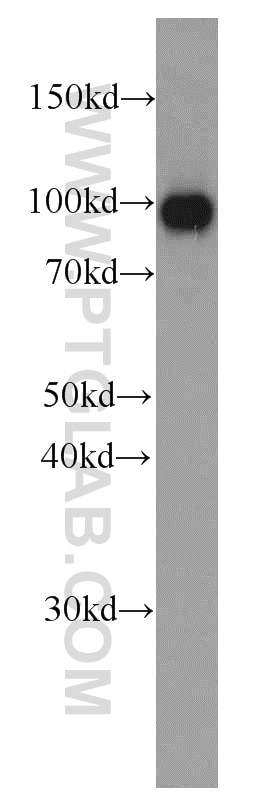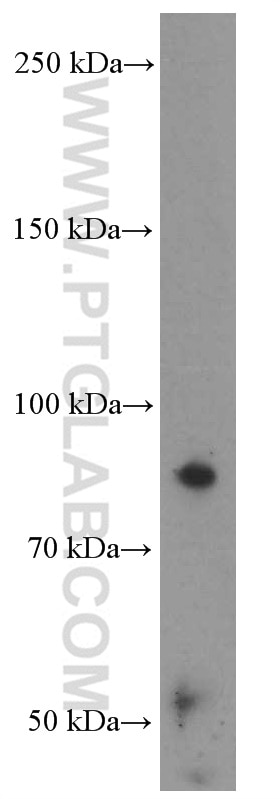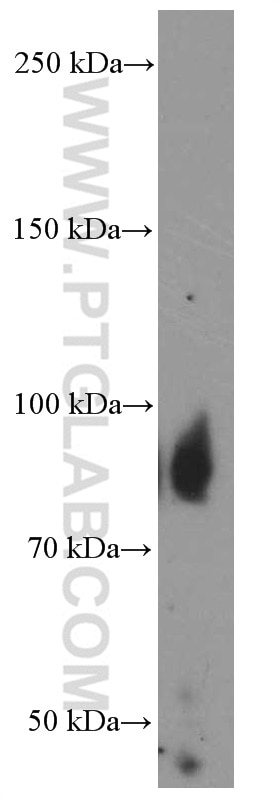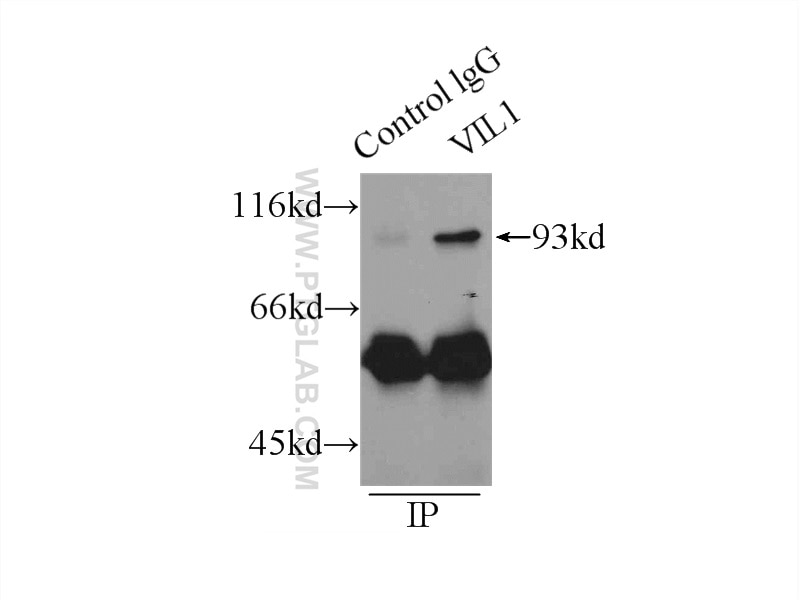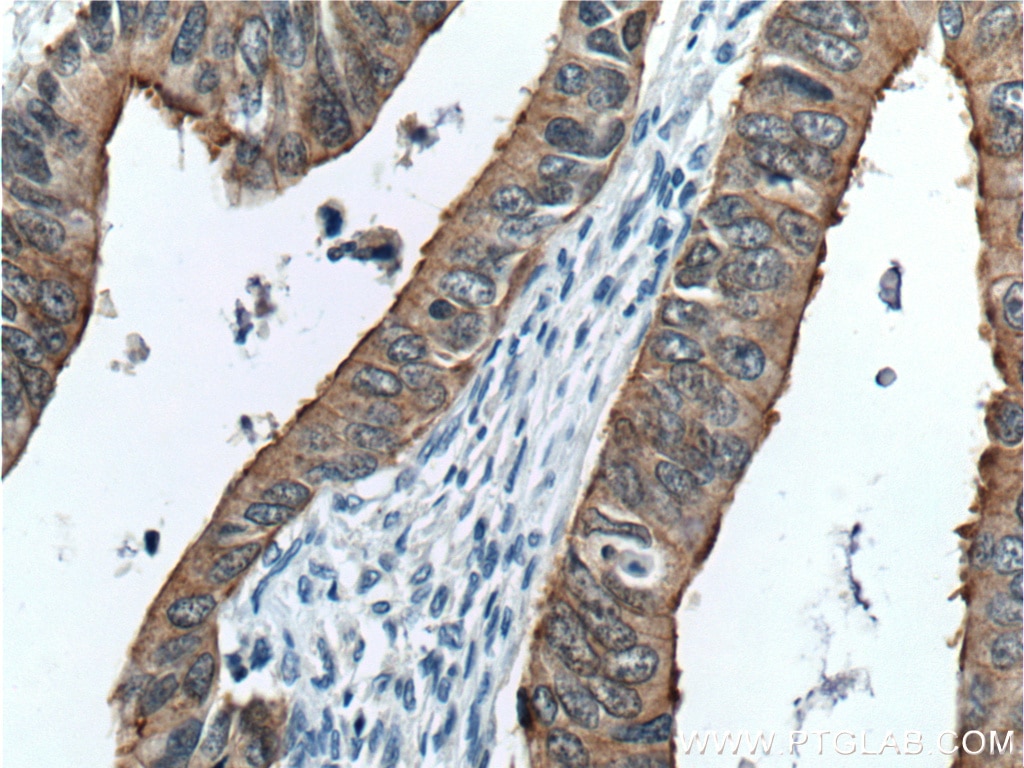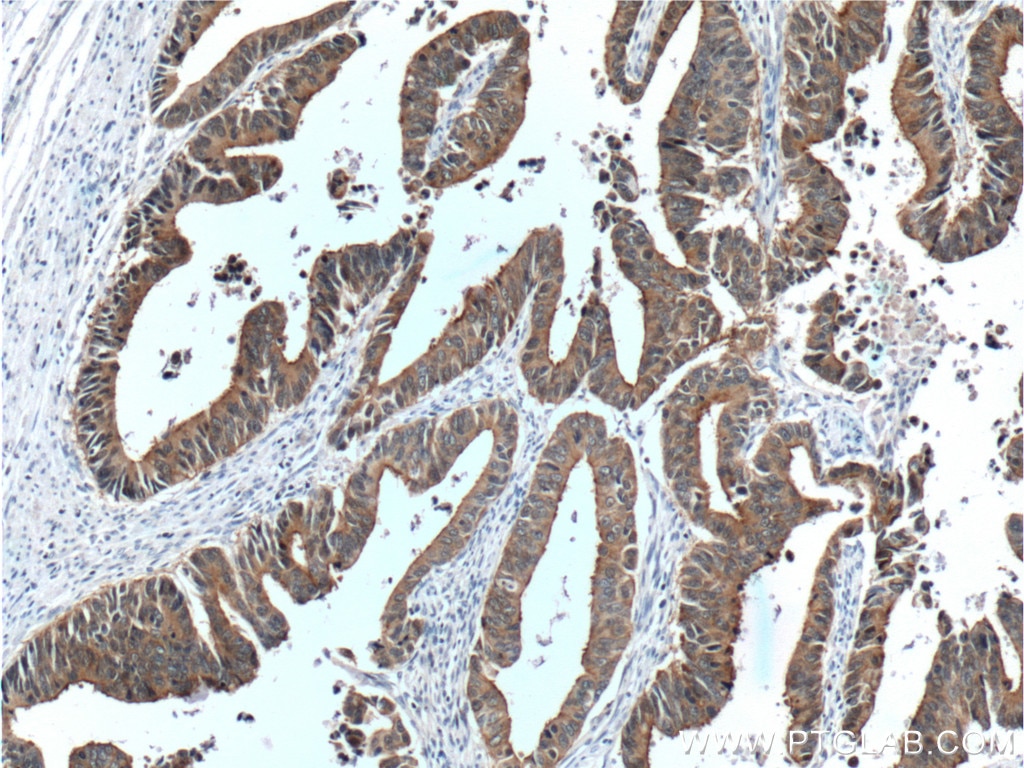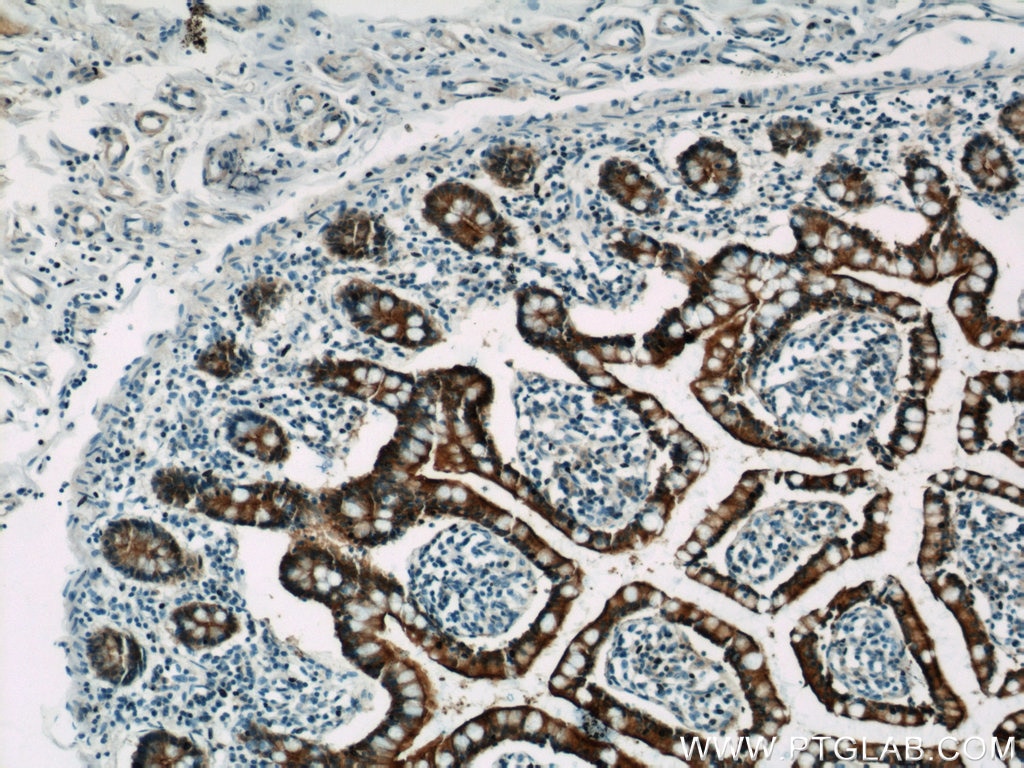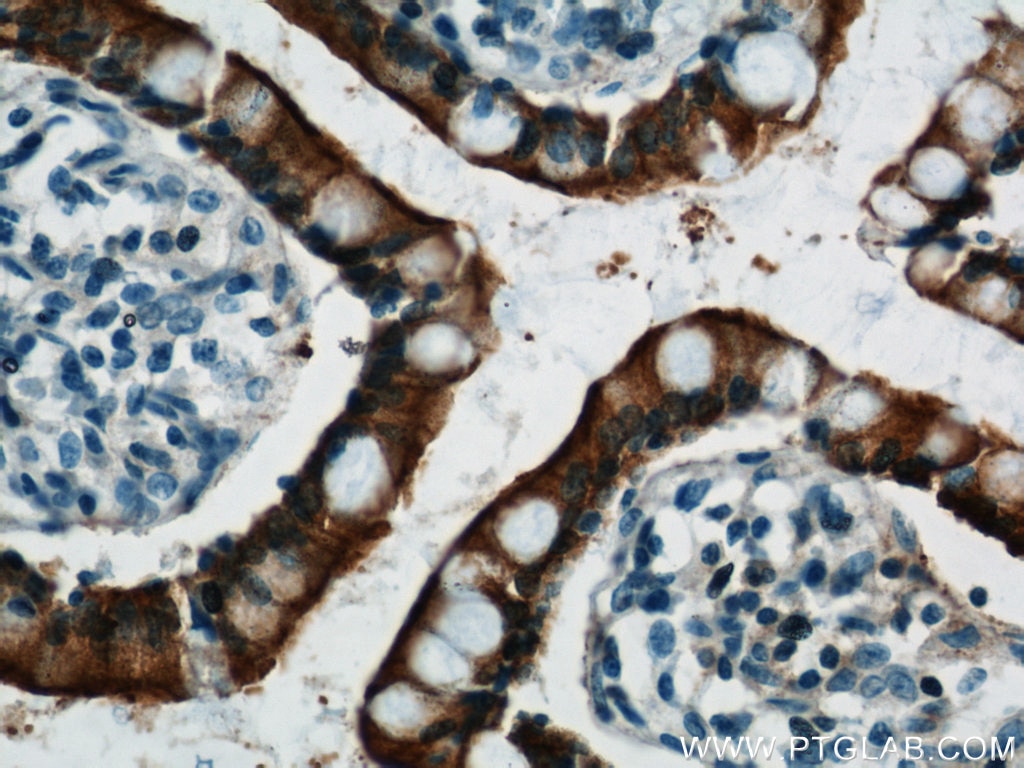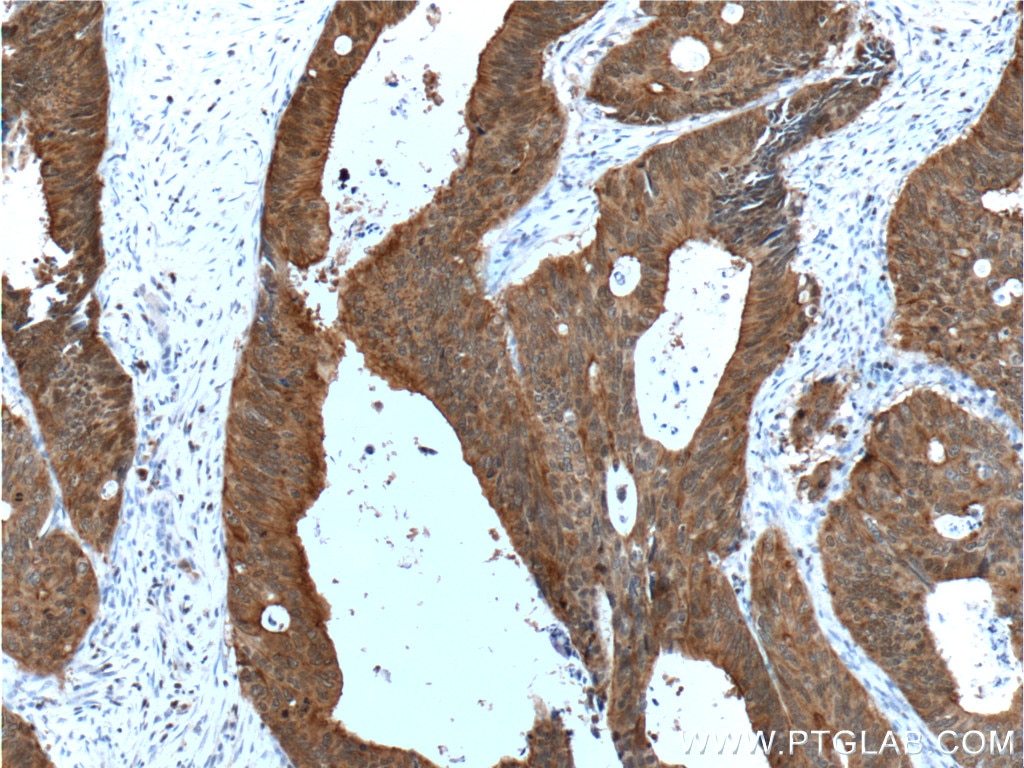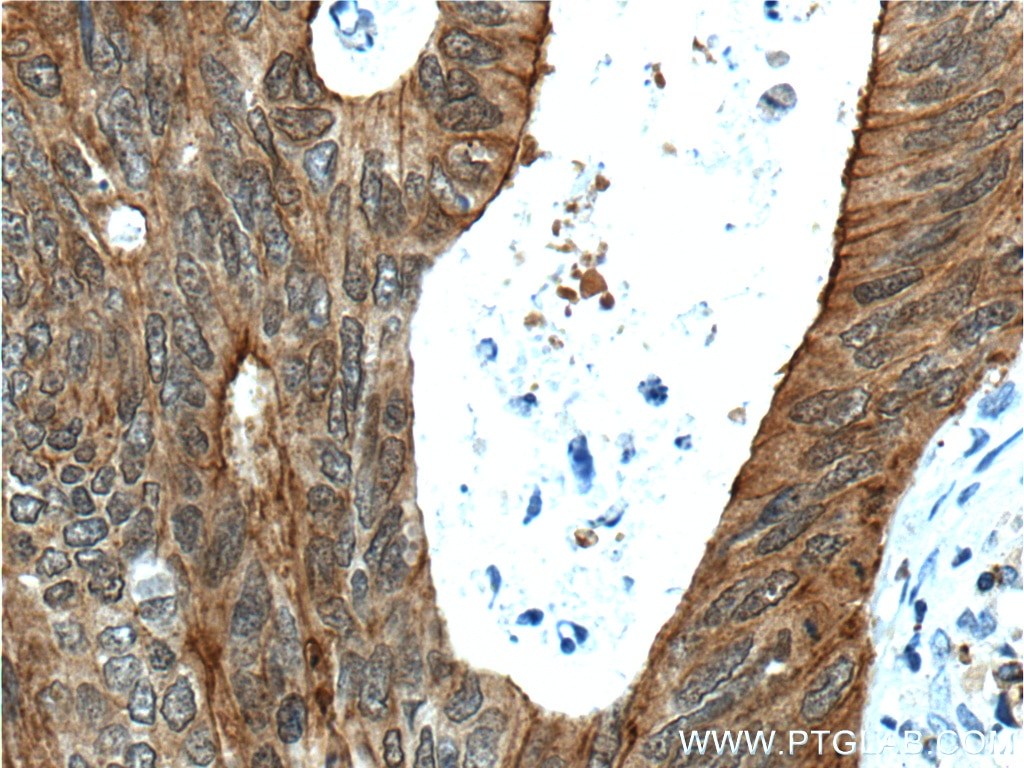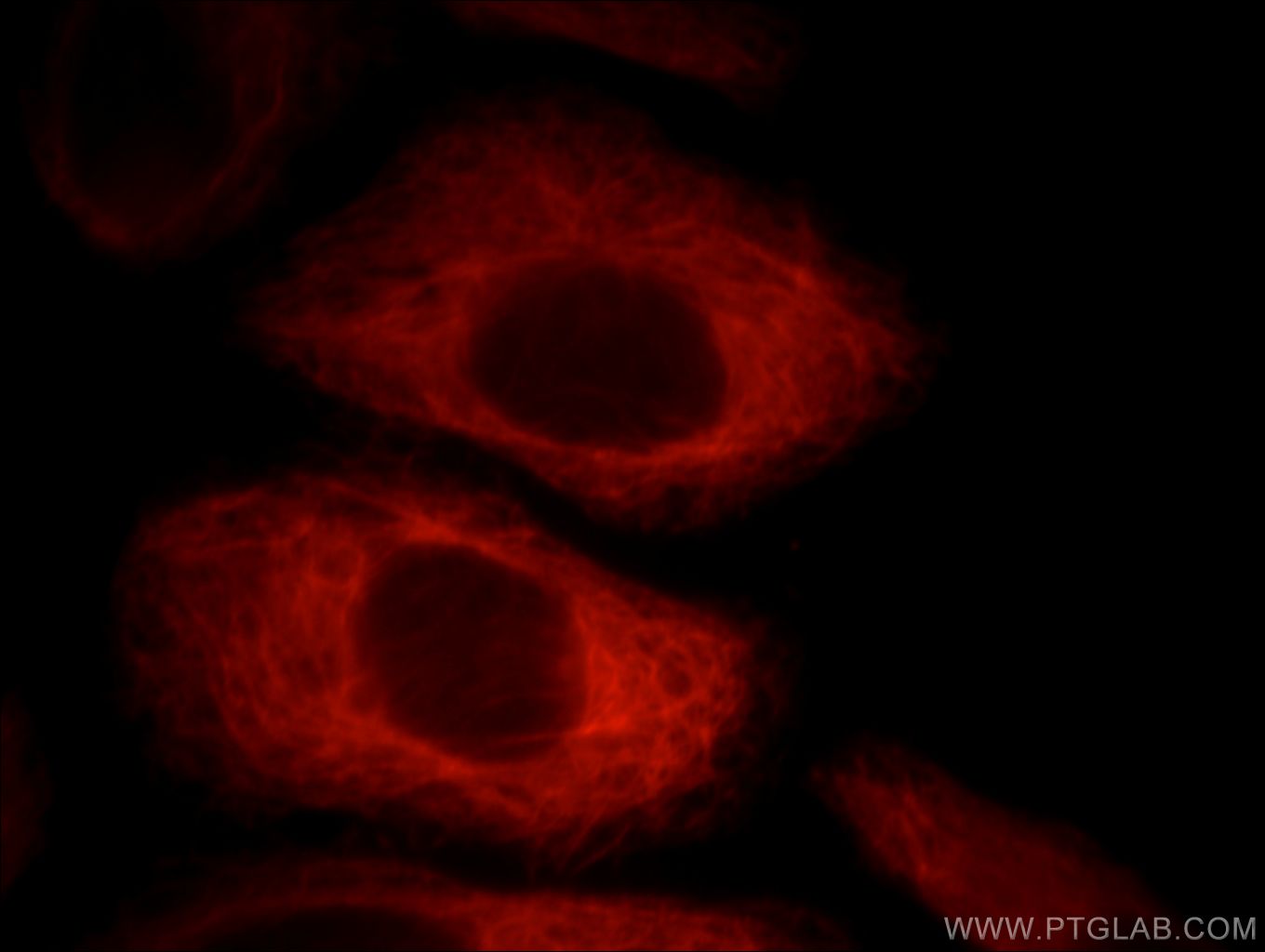Villin Monoklonaler Antikörper
Villin Monoklonal Antikörper für IF, IHC, IP, WB, ELISA
Wirt / Isotyp
Maus / IgG1
Getestete Reaktivität
human, Maus
Anwendung
WB, IP, IHC, IF, ELISA
Konjugation
Unkonjugiert
CloneNo.
2B7B9
Kat-Nr. : 66096-1-Ig
Synonyme
Galerie der Validierungsdaten
Geprüfte Anwendungen
| Erfolgreiche Detektion in WB | Human kidney, Gewebe |
| Erfolgreiche IP | Mausnierengewebe |
| Erfolgreiche Detektion in IHC | humanes Kolonkarzinomgewebe, humanes Dünndarmgewebe Hinweis: Antigendemaskierung mit TE-Puffer pH 9,0 empfohlen. (*) Wahlweise kann die Antigendemaskierung auch mit Citratpuffer pH 6,0 erfolgen. |
| Erfolgreiche Detektion in IF | HepG2-Zellen |
Empfohlene Verdünnung
| Anwendung | Verdünnung |
|---|---|
| Western Blot (WB) | WB : 1:500-1:2000 |
| Immunpräzipitation (IP) | IP : 0.5-4.0 ug for 1.0-3.0 mg of total protein lysate |
| Immunhistochemie (IHC) | IHC : 1:50-1:500 |
| Immunfluoreszenz (IF) | IF : 1:10-1:100 |
| It is recommended that this reagent should be titrated in each testing system to obtain optimal results. | |
| Sample-dependent, check data in validation data gallery | |
Veröffentlichte Anwendungen
| WB | See 1 publications below |
| IHC | See 4 publications below |
| IF | See 4 publications below |
Produktinformation
66096-1-Ig bindet in WB, IP, IHC, IF, ELISA Villin und zeigt Reaktivität mit human, Maus
| Getestete Reaktivität | human, Maus |
| In Publikationen genannte Reaktivität | human, Maus |
| Wirt / Isotyp | Maus / IgG1 |
| Klonalität | Monoklonal |
| Typ | Antikörper |
| Immunogen | Villin fusion protein Ag9637 |
| Vollständiger Name | villin 1 |
| Berechnetes Molekulargewicht | 827aa,93 kDa; 826aa,93 kDa |
| Beobachtetes Molekulargewicht | 93-95 kDa |
| GenBank-Zugangsnummer | BC017303 |
| Gene symbol | VIL1 |
| Gene ID (NCBI) | 7429 |
| Konjugation | Unkonjugiert |
| Form | Liquid |
| Reinigungsmethode | Protein-A-Reinigung |
| Lagerungspuffer | PBS mit 0.02% Natriumazid und 50% Glycerin pH 7.3. |
| Lagerungsbedingungen | Bei -20°C lagern. Nach dem Versand ein Jahr lang stabil Aliquotieren ist bei -20oC Lagerung nicht notwendig. 20ul Größen enthalten 0,1% BSA. |
Hintergrundinformationen
Villin 1 (VIL1) is a 95-kDa F-actin bundling and severing protein and its expression is restricted to epithelial cells with a brush border, like epithelial cells of the intestinal mucosa, gall bladder, renal proximal tubules and ductuli efferentes of the testis. VIL1 has been reported to be an epithelial cell-specific anti-apoptotic protein, and to have an important function in regulating actin dynamics, cell morphology, epithelial-to-mesenchymal transitions, cell migration and cell survival. In addition, VIL1 is a useful diagnostic marker for of various cancer, like cervical and endometrial adenocarcinomas, renal cell carcinoma. VIL1 was recently identified as a novel biomarker predictive for postoperative recurrence and poorer prognosis of high serum AFP associated HCC.
Protokolle
| Produktspezifische Protokolle | |
|---|---|
| WB protocol for Villin antibody 66096-1-Ig | Protokoll herunterladen |
| IHC protocol for Villin antibody 66096-1-Ig | Protokoll herunterladen |
| IF protocol for Villin antibody 66096-1-Ig | Protokoll herunterladen |
| IP protocol for Villin antibody 66096-1-Ig | Protokoll herunterladen |
| Standard-Protokolle | |
|---|---|
| Klicken Sie hier, um unsere Standardprotokolle anzuzeigen |
Publikationen
| Species | Application | Title |
|---|---|---|
Gastroenterology Stiffness Restricts the Stemness of the Intestinal Stem Cells and Skews Their Differentiation Towards Goblet Cells | ||
Theranostics The Circadian Clock Gene Bmal1 Controls Intestinal Exporter MRP2 and Drug Disposition. | ||
Oxid Med Cell Longev Sitagliptin Alleviates Radiation-Induced Intestinal Injury by Activating NRF2-Antioxidant Axis, Mitigating NLRP3 Inf--lammasome Activation, and Reversing Gut Microbiota Disorder. | ||
Inflamm Bowel Dis Excessive Mitochondrial Fission Suppresses Mucosal Repair by Impairing Butyrate Metabolism in Colonocytes | ||
J Pharmacol Sci Syntaxin 3 interacts with serotonin transporter and regulates its function. | ||
Int J Clin Exp Pathol A four actin-binding protein signature model for poor prognosis of patients with esophageal squamous cell carcinoma. |
